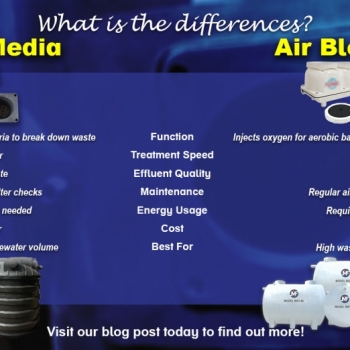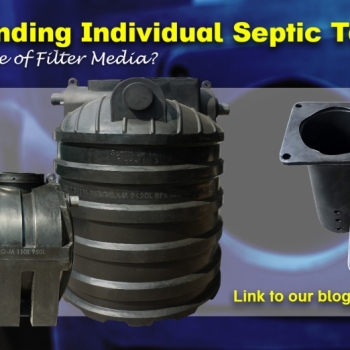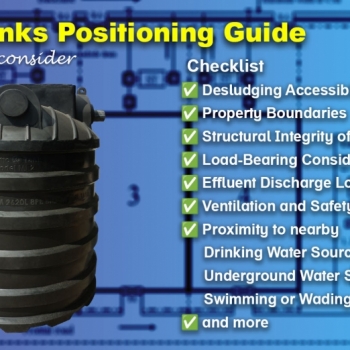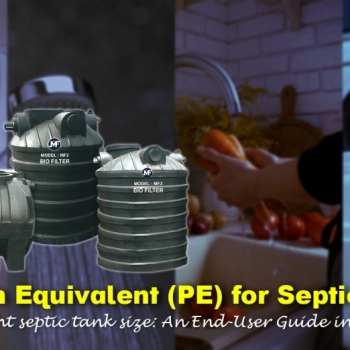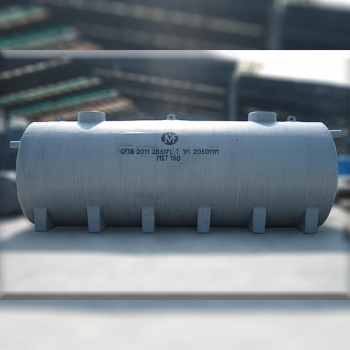Choosing between an individual septic tank with filter media and a mechanical septic tank with an air blower depends on efficiency, cost, and maintenance. This article breaks down their key differences to help you select the right wastewater treatment solution.
Individual Septic Tanks: A Viable Solution for Rapid Housing Growth in Langat
17 Jun 2024
Individual Septic Tanks: A Viable Solution for Rapid Housing Growth in Langat
Individual Septic Tanks: A Viable Solution for Rapid Housing Growth in Langat
- Individual Septic Tanks: A Viable Solution for Rapid Housing Growth in Langat
- Introduction
- The Langat Centralized Sewage Treatment Plant
- The Challenge of Rapid Development
- Why Individual Septic Tanks are Essential
- Case Studies and Success Stories
- Implementation and Best Practices
- Conclusion
- Frequently Asked Questions
- What is the Langat Centralized Sewage Treatment Plant (CSTP)?
- Why can't the Langat CSTP handle the rapid housing development in Langat?
- What are individual septic tanks, and how do they work?
- How are individual septic tanks beneficial for new housing developments?
- Are individual septic tanks environmentally friendly?
- What are the maintenance requirements for septic tanks?
- Are there any regulatory requirements for installing septic tanks in Langat?
- Can individual septic tanks handle the sewage needs of large housing developments?
- Have there been successful implementations of septic tanks in other regions?
- What should developers consider before choosing septic tanks for their projects?
- What are common materials used for individual septic tanks?
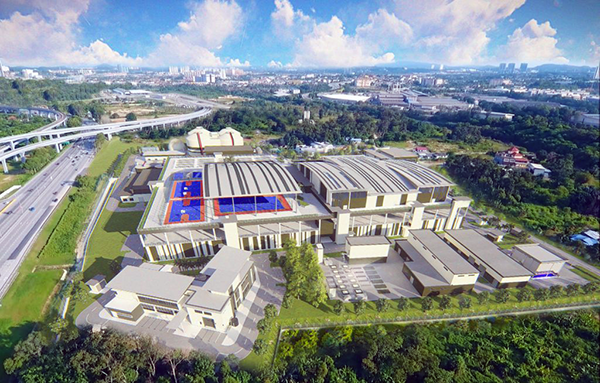
Introduction
Langat, a region experiencing significant urbanization, faces unique challenges in managing its rapid housing development. The fast pace of construction often outpaces the expansion of essential infrastructure like centralized sewage treatment facilities. This mismatch can create significant challenges in managing wastewater effectively. The Langat Centralized Sewage Treatment Plant (CSTP) is a critical infrastructure project aimed at addressing these challenges. However, the speed of urbanization in Langat sometimes exceeds the plant's capacity to accommodate new developments promptly. Amidst these challenges, individual septic tanks present a promising interim solution to manage sewage in these rapidly growing areas.
The Langat Centralized Sewage Treatment Plant
Description and Purpose
The Langat CSTP is designed to serve the sewage treatment needs of the Langat River Basin, an area experiencing rapid urbanization and industrial growth. The CSTP was conceived following a feasibility study in 2013 to address the high levels of pollution in the Sungai Langat, a crucial source of potable water for the region. Formally awarded by the Malaysian Government in 2015, the Langat CSTP aims to handle the increasing wastewater load due to the projected population growth of 920,000 by 2035 (Construction Plus Asia).
Current Capacity and Limitations
Despite its extensive design and significant capacity, which includes a large site area of 7.30 hectares and advanced treatment technology, the Langat CSTP faces limitations. The rapid development of residential and commercial areas around the plant creates a demand for wastewater treatment that can sometimes surpass the plant's current and planned capacities.
The Challenge of Rapid Development
Statistics on Housing Growth
Langat has seen substantial housing development driven by urban expansion and population growth. According to recent data, the region's housing market has grown at an annual rate of approximately 5-7%, with thousands of new units being constructed each year.
Impact on Existing Sewage Infrastructure
This rapid growth places immense pressure on the existing sewage infrastructure. Centralized systems like the CSTP require significant time and investment to expand. In the interim, newly developed areas often face challenges in managing wastewater, leading to potential environmental and public health risks. The gap between housing development and sewage infrastructure expansion highlights the need for immediate, localized solutions.
Why Individual Septic Tanks are Essential
Advantages of Septic Tanks in New Developments
Individual septic tanks offer several advantages for managing sewage in new housing developments. They provide a cost-effective solution, requiring lower installation and maintenance costs compared to extending centralized systems. Septic tanks can be installed relatively quickly, making them ideal for areas needing immediate sewage solutions.
Cost-Effectiveness and Financial Viability
Individual septic tanks offer a cost-effective solution for managing sewage in new developments. By eliminating the need for extensive piping and infrastructure required for centralized systems, these decentralized solutions provide significant upfront cost savings. Moreover, reduced maintenance and operational expenses contribute to their long-term financial viability.
Environmental Sustainability
In a time of increasing environmental awareness, efficient sewage management is paramount. Septic tanks use natural processes to treat wastewater on-site, reducing the environmental impact. Properly maintained septic systems can help prevent groundwater contamination and support sustainable water management by allowing treated effluent to replenish local groundwater supplies. This localized treatment reduces the strain on centralized systems and helps maintain environmental quality.
Flexibility and Adaptability
The flexibility of individual septic tanks makes them well-suited to areas experiencing rapid growth and development. These systems can be easily installed and scaled to accommodate varying population densities and land use changes, ensuring that sewage infrastructure remains responsive to evolving needs.
Reliability and Independence
Unlike centralized systems, individual septic tanks provide independence from external factors such as power outages or system failures. This reliability ensures consistent sewage treatment even in challenging conditions, reducing the risk of environmental contamination and public health hazards.
Case Studies and Success Stories
Examples of Successful Implementation in Similar Regions
In many suburban and rural areas worldwide, individual septic tanks have proven effective. For instance, in parts of the United States, septic systems are the primary method for treating wastewater in rural communities. These systems have successfully managed household sewage, maintained environmental quality, and provided a cost-effective solution for residents.
Testimonials from Local Developers and Residents
Local developers in the Langat region have begun to recognize the benefits of individual septic tanks. By integrating these systems into their housing projects, they ensure effective wastewater management from the outset, avoiding delays associated with centralized systems. This approach not only meets immediate needs but also supports sustainable development practices. Residents have also expressed satisfaction with the reliability and efficiency of septic tanks, emphasizing their role in maintaining a clean and healthy living environment.
Implementation and Best Practices
Guidelines for Installing and Maintaining Septic Tanks
Proper installation and maintenance are crucial for the effectiveness of septic tanks. The following guidelines should be followed:
-
Site Assessment and Planning: Conduct thorough soil testing to determine the site's absorption capacity. Design the system based on the number of users and local regulations.
-
Excavation and Tank Placement: Dig a suitable area for the tank and ensure it is placed level and secure.
-
Drain Field Setup: Create a drain field where treated wastewater can be absorbed into the ground.
-
Connection and Testing: Connect the home's plumbing to the septic system and perform initial tests to ensure functionality.
Regulatory Considerations and Compliance
Compliance with local regulations is essential to prevent environmental issues and ensure the system's longevity. Regular inspections and maintenance, including pumping out the tank every 3-5 years, are necessary to keep the system functioning properly. Homeowners should also be educated on proper usage to avoid system failures and contamination risks.
Conclusion
Individual septic tanks provide a sustainable, cost-effective solution for managing wastewater in rapidly developing housing areas underserved by centralized treatment plants like the Langat CSTP. By providing immediate and reliable sewage treatment, septic tanks support the continued growth and development of new communities while protecting environmental and public health.
Are you planning a new housing development in an area without centralized sewage treatment? Explore the advantages of individual septic tanks today and ensure a sustainable future for your community. Visit our product page for more product details – Individual Sewage Tanks (IST) Septic Tank or talk to us about your project today! WhatsApp or email – sales@muifatt.com.my
Frequently Asked Questions
What is the Langat Centralized Sewage Treatment Plant (CSTP)?
The Langat CSTP is a large-scale sewage treatment facility designed to address wastewater management needs in the Langat River Basin. It aims to reduce pollution in the Sungai Langat and serve the region's growing population.
Why can't the Langat CSTP in Kajang catchment area handle the rapid housing development project in Langat?
The pace of urbanization in Langat often exceeds the capacity of the CSTP to expand its service area promptly, leading to a mismatch between new housing developments and available sewage treatment infrastructure.
What are individual septic tanks, and how do they work?
Individual septic tanks are on-site wastewater treatment systems that use natural processes to treat and dispose of household sewage. They consist of a tank and a drain field where treated effluent is absorbed into the ground.
How are individual septic tanks beneficial for new housing developments?
Septic tanks provide a cost-effective, quick-to-install solution for managing sewage in areas not yet served by centralized systems. They offer independence from centralized networks and reduce environmental impact.
Are individual septic tanks environmentally friendly?
Yes, properly maintained septic tanks use natural filtration processes, which can reduce environmental impact compared to centralized systems. They help recharge groundwater supplies and prevent contamination.
What are the maintenance requirements for septic tanks?
Septic tanks need regular inspections and pumping every 3-5 years to remove sludge and prevent system failures. Homeowners should also follow proper usage guidelines to maintain system efficiency.
Are there any regulatory requirements for installing septic tanks in Langat?
Yes, installing septic tanks must comply with local regulations, including site assessments, soil testing, and adherence to design standards. Regular inspections and maintenance are also mandated to ensure environmental protection.
Can individual septic tanks handle the sewage needs of large housing developments?
While ideal for smaller developments or individual homes, septic tanks can be scaled and multiple units can be installed to meet the needs of larger developments. Proper planning and design are essential.
Have there been successful implementations of septic tanks in other regions?
Yes, many suburban and rural areas worldwide, including parts of the United States, successfully use septic tanks as their primary wastewater treatment method, providing effective sewage management and environmental protection.
What should developers consider before choosing septic tanks for their projects?
Developers should assess the site's soil absorption capacity, ensure compliance with local regulations, plan for regular maintenance, and educate homeowners on proper usage to ensure the long-term success of septic tank systems.
What are common materials used for individual septic tanks?
Individual septic tanks can be made from a variety of materials, each with its advantages:
-
Concrete: Durable and long-lasting, concrete tanks are heavy and less likely to float in high water tables.
-
Fiberglass-Reinforced Plastic: Lightweight, resistant to corrosion, and easy to install
-
Plastic (Polyethylene): Lightweight and resistant to cracking and corrosion
-
Steel: Strong but prone to rust and corrosion over time, requiring regular maintenance and potential replacement
Disclaimer:-
The information provided on this website is for general informational purposes only and does not constitute legal advice. While we strive to ensure the accuracy and reliability of the information provided, we make no representations or warranties of any kind, express or implied, about the completeness, accuracy, reliability, suitability, or availability concerning the information contained herein. Any reliance you place on such information is therefore strictly at your own risk. This website may contain links to other third-party websites. Such links are only for the convenience of the reader, user, or browser; which we do not warrant, recommend, endorse, or assume liability for the contents of the third-party sites.
Keep in touch with us should you be keen on receiving timely updates from us
- Website - https://www.muifatt.com.my/home/
- Facebook - https://www.facebook.com/muifattmarketing
- Instagram - https://www.instagram.com/muifattmarketing/
- Google - https://goo.gl/maps/WxVY13gNcaRTS7Jp6
- Youtube - http://www.youtube.com/@MuiFattMarketing
- TikTok - https://www.tiktok.com/@muifattmarketing
- LinkedIn - https://www.linkedin.com/company/mui-fatt-marketing-sdn-bhd-
- Linktree - https://linktr.ee/muifattmarketing
- Shopee - https://www.shopee.com.my/muifattmarketing
- Lazada - https://www.lazada.com.my/shop/mui-fatt-marketing
Recent Blog
The Role of Air Blower in Mechanical Septic Tanks
Unlike traditional septic systems, mechanical septic tanks use air blowers to accelerate wastewater treatment. This article explores how air blowers enhance aeration, promote bacterial breakdown, and ensure a more effective sewage treatment system in Malaysia.
The Role of Filter Media in Individual Septic Tanks
Filter media plays a critical role in solid-liquid separation and biological treatment in individual septic tanks. This article explores the importance, types, and benefits of filter media in wastewater treatment, helping you make an informed decision when selecting a septic system in Malaysia.
Where Should You Place Your Septic Tank? Key Factors to Consider
Proper septic tank placement is crucial for efficient wastewater treatment. Learn why septic tanks should not be placed inside a house, how their location impacts wastewater disposal, and how to determine the best site for installation.
Simplified IWK Submission Process for Septic Tank Approvals in Malaysia
Navigating the IWK submission process can be challenging. Discover our simplified steps and professional advice for hassle-free septic tank approvals.
Understanding Population Equivalent (PE) for Septic Tanks: An End-User Guide
Discover what Population Equivalent (PE) is and its importance for septic systems, with an easy-to-follow guide for end-users, potential issues of choosing the wrong capacity, and expert tips from Mui Fatt.
Understanding Biodegradable Septic Tanks: A Guide in Malaysia
This article explores biodegradable septic tanks, covering their materials, operations, costs, and maintenance. It also explains why they're rare in Malaysia and introduces alternative sustainable options.
Why Desludging Your Septic Tank Every 2 Years Matters
Regular septic tank desludging ensures efficiency, prevents costly repairs, and protects your environment. Learn the top 10 reasons why this process is critical every two years.



